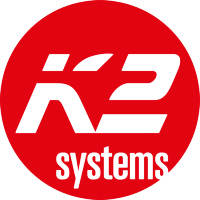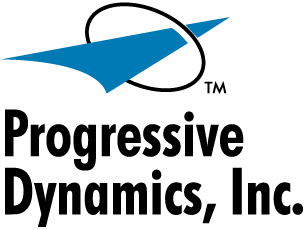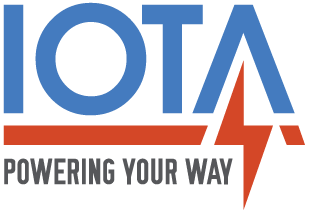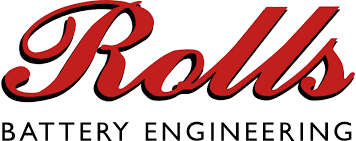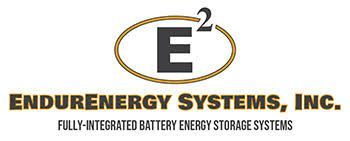New Holland, PA
328A E Main Street New Holland, PA 17557
Millersburg, OH
4870 TR 351 Millersburg, OH 44654
Millersburg, IN
203 North Wabash Street Millersburg, IN 46543
Distributor of Off-Grid Solar Energy Equipment
We go beyond standard solar energy equipment suppliers.
Distributor of Off-Grid Solar Energy Equipment
We go beyond standard solar energy equipment suppliers.
Much More Than Your Average Solar Energy Equipment Supplier
Much More Than Your Average Solar Energy Equipment Supplier
Installing off-grid solar systems is a fast-paced, constantly changing business. While you run your company, we provide you with fast, dependable service as your solar energy equipment supplier. Don’t wait—we’re only a phone call away!
Expert Support
Why should you source your solar systems from us?
When it comes to keeping your margins wide while increasing your customer satisfaction, your solar energy equipment supplier is a significant factor. Don’t get left behind your competition, choose Zonna to supply your equipment. Our low costs, quick shipping, and expert advice will keep you and your customers smiling from one job to the next. Feel free to call us any time, we would love to chat and discuss your off-grid goals.
CEO – Matt Smucker
- We have partnered with the leading brands of the off-grid industry to bring you, the installer, the highest quality products at unbelievable prices.
- Most of our team members have 5 to 15 years of experience in designing and installation of RE systems.
- We believe that every customer should be treated as family and receive pricing and support that grows your business, your brand, and your profits.
- We have distribution centers in Millersburg Indiana, Millersburg Ohio, and New Holland Pennsylvania to assure your products get shipped in a timely manner.
New Holland, PA
328A E Main Street
New Holland, PA 17557
Millersburg, OH
4870 TR 351 Millersburg, OH 44654
Millersburg, IN
203 North Wabash Street Millersburg, IN 46543
Why should you source your solar systems from us?
When it comes to keeping your margins wide while increasing your customer satisfaction, your solar energy equipment supplier is a significant factor. Don’t get left behind your competition, choose Zonna to supply your equipment. Our low costs, quick shipping, and expert advice will keep you and your customers smiling from one job to the next. Feel free to call us any time, we would love to chat and discuss your off-grid goals.
CEO – Matt Smucker
- We have partnered with the leading brands of the off-grid industry to bring you, the installer, the highest quality products at unbelievable prices.
- Most of our team members have 5 to 15 years of experience in designing and installation of RE systems.
- We believe that every customer should be treated as family and receive pricing and support that grows your business, your brand, and your profits.
- We have distribution centers in Millersburg Indiana, Millersburg Ohio, and New Holland Pennsylvania to assure your products get shipped in a timely manner.
New Holland, PA
328A E Main Street
New Holland, PA 17557
Millersburg, OH
4870 TR 351 Millersburg, OH 44654
Millersburg, IN
203 North Wabash Street
Millersburg, IN 46543
Why should you source your solar systems from us?
When it comes to keeping your margins wide while increasing your customer satisfaction, your solar energy equipment supplier is a significant factor. Don’t get left behind your competition, choose Zonna to supply your equipment. Our low costs, quick shipping, and expert advice will keep you and your customers smiling from one job to the next. Feel free to call us any time, we would love to chat and discuss your off-grid goals.
CEO – Matt Smucker
- We have partnered with the leading brands of the off-grid industry to bring you, the installer, the highest quality products at unbelievable prices.
- Most of our team members have 5 to 15 years of experience in designing and installation of RE systems.
- We believe that every customer should be treated as family and receive pricing and support that grows your business, your brand, and your profits.
- We have distribution centers in Millersburg Indiana, Millersburg Ohio, and New Holland Pennsylvania to assure your products get shipped in a timely manner.
New Holland, PA
328A E Main Street
New Holland, PA 17557
Millersburg, OH
4870 TR 351 Millersburg, OH 44654
Millersburg, IN
203 North Wabash Street
Millersburg, IN 46543
We’ve Curated The Best Products
So Every Project Is A Winner
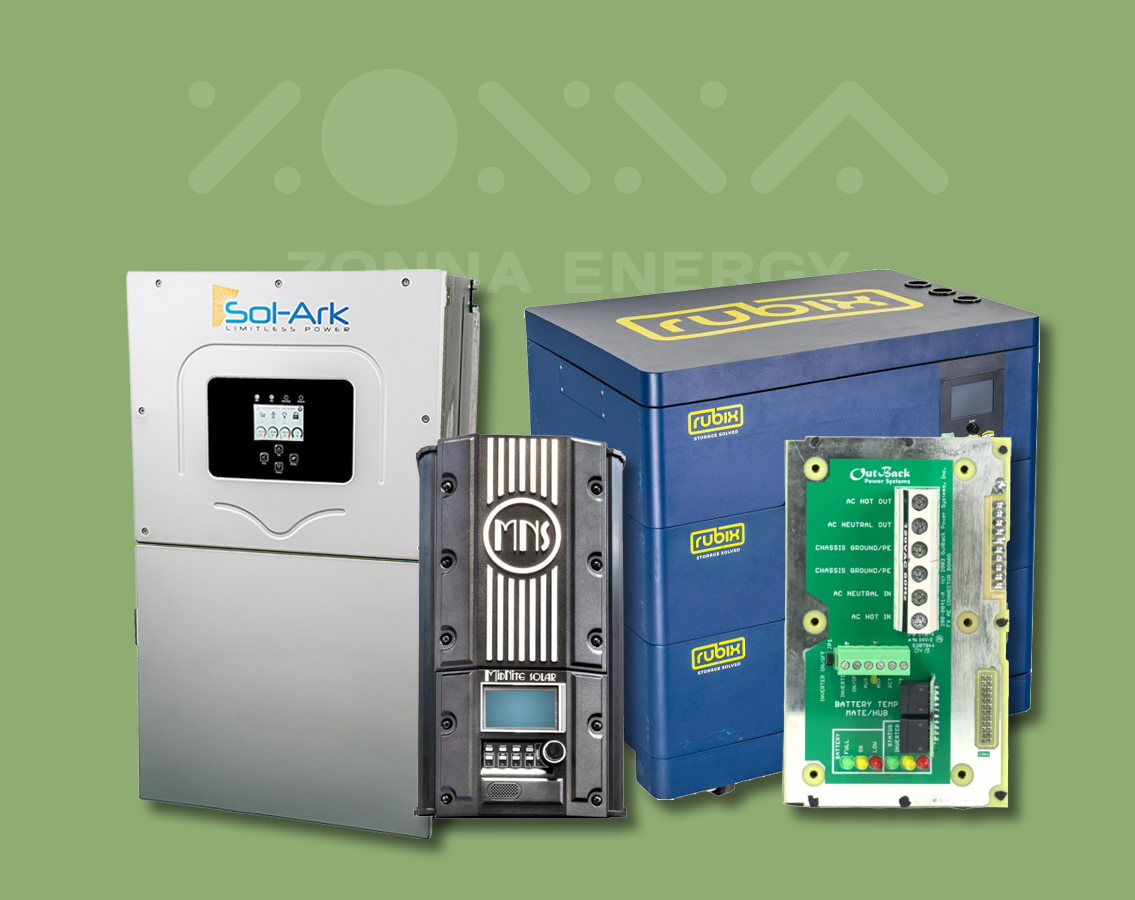
We’ve Curated The Best Products
So Every Project Is A Winner
Inverters & All-In-One Systems
Every off-grid power system requires a high quality, innovative solution to convert your DC battery storage to usable electricity. Whether your client is powering their homestead, business, or mobile equipment, you’ll find the right product for them here.
Outback - Schneider - Samlex - Magnum - Victron - Sol-Ark - Phocos - MidNite
Batteries
Your battery selection is crucial when building a reliable off-grid power system. Here at Zonna we have tested every battery that we sell, we are eager to help you find the best battery for your customer.
Trojan - Rolls - Sol-Ark - FullRiver - HomeGrid - Relion - Simpliphi - Fortress - Ark Battery - Endur Energy
Inverter Parts Repair
A downed inverter is a downed system. We feel your pain and we’re here to help. We stock inverter parts for all major manufacturers and can sell parts or get your inverter fixed and returned in record time.
Solar Racking System
No system is complete without an innovative mounting system for your PV modules. From pitched and flat roofs to ground mount systems of any size, we will help you design your racking system.
Appliances
Are you looking for world class efficiency from your refrigerator and freezer? Look no further, SunStar appliances are simply the best in the market, while offering both AC and DC models.
Inverters & All-In-One Systems
Every off-grid power system requires a high quality, innovative solution to convert your DC battery storage to usable electricity. Whether your client is powering their homestead, business, or mobile equipment, you’ll find the right product for them here.
Outback - Schneider - Samlex - Magnum - Victron - Sol-Ark - Phocos - MidNite
Batteries
Your battery selection is crucial when building a reliable off-grid power system. Here at Zonna we have tested every battery that we sell, we are eager to help you find the best battery for your customer.
Trojan - Rolls - Sol-Ark - FullRiver - HomeGrid - Relion - Simpliphi - Fortress - Ark Battery - Endur Energy
Inverter Parts Repair
A downed inverter is a downed system. We feel your pain and we’re here to help. We stock inverter parts for all major manufacturers and can sell parts or get your inverter fixed and returned in record time.
Solar Racking Systems
No system is complete without an innovative mounting system for your PV modules. From pitched and flat roofs to ground mount systems of any size, we will help you design your racking system.
Appliances
Are you looking for world class efficiency from your refrigerator and freezer? Look no further, SunStar appliances are simply the best in the market, while offering both AC and DC models.
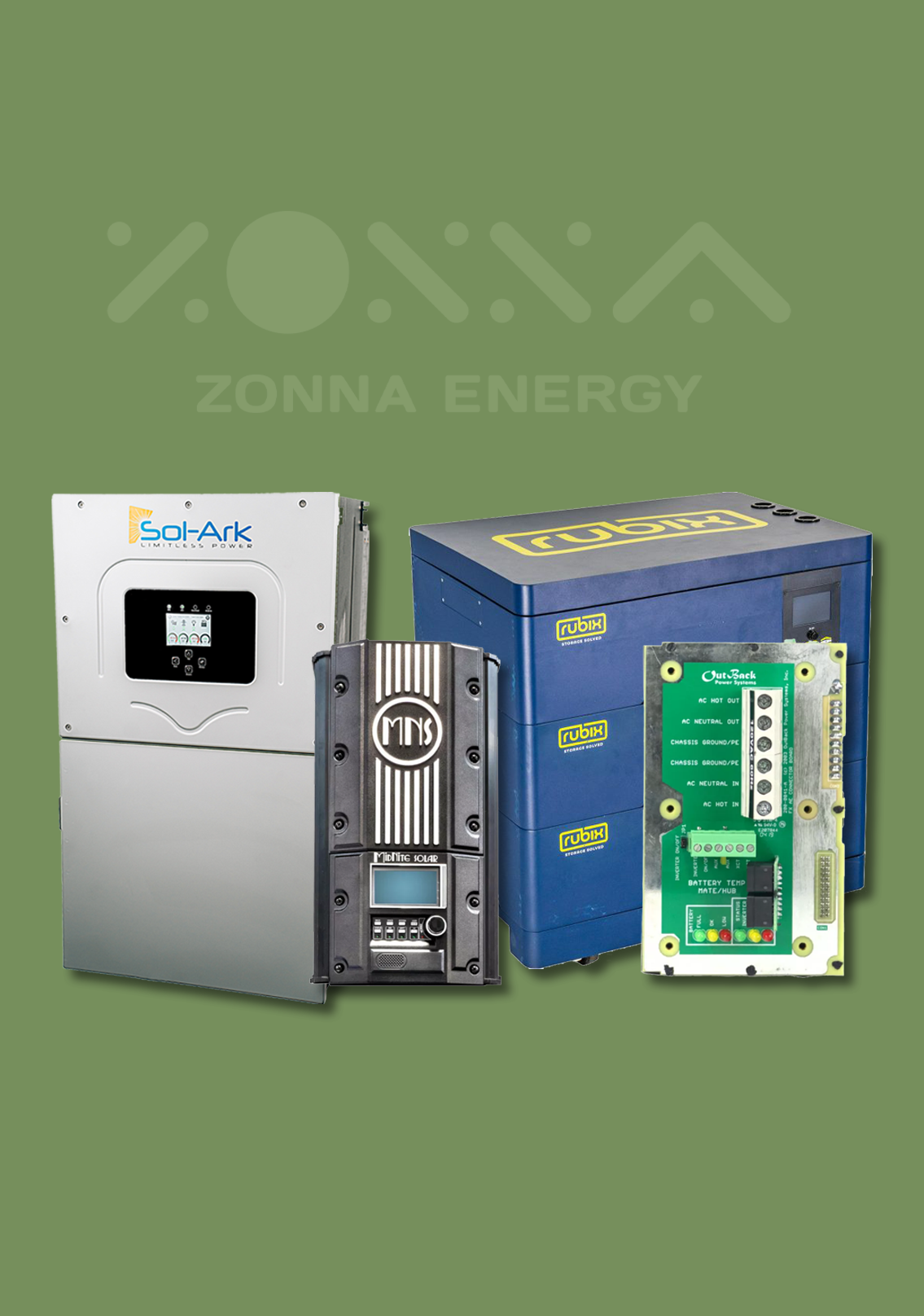
Inverters & All-In-One Systems
Every off-grid power system requires a high quality, innovative solution to convert your DC battery storage to usable electricity. Whether your client is powering their homestead, business, or mobile equipment, you’ll find the right product for them here.
Batteries
Your battery selection is crucial when building a reliable off-grid power system. Here at Zonna we have tested every battery that we sell, we are eager to help you find the best battery for your customer.
Inverter Parts Repair
A downed inverter is a downed system. We feel your pain and we’re here to help. We stock inverter parts for all major manufacturers and can sell parts or get your inverter fixed and returned in record time.
Solar Racking System
No system is complete without an innovative mounting system for your PV modules. From pitched and flat roofs to ground mount systems of any size, we will help you design your racking system.
Appliances
Are you looking for world class efficiency from your refrigerator and freezer? Look no further, SunStar appliances are simply the best in the market, while offering both AC and DC models.
We’ve Curated The Best Products
So Every Project Is A Winner
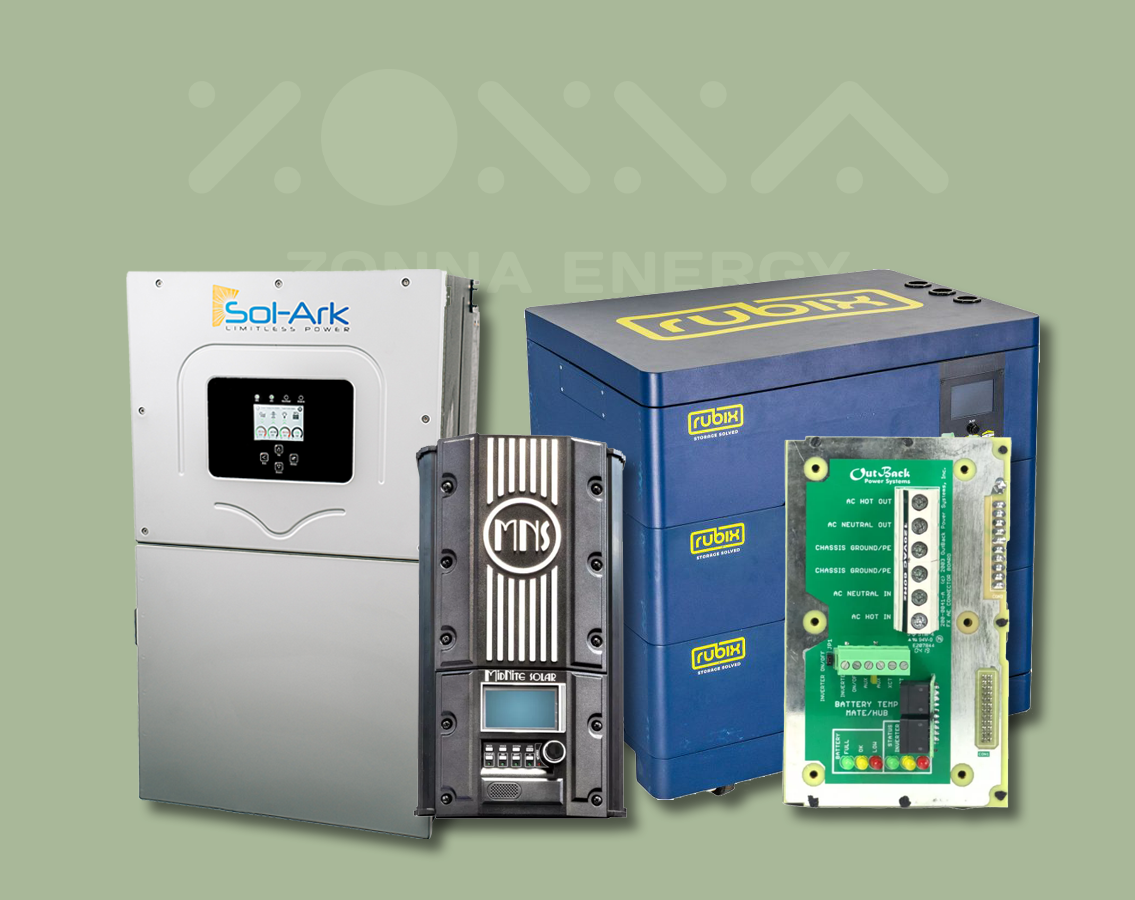
What people say about us?
Don't just take it from us

Julia K.
“This place saved our butts. We needed replacement fans for our inverter. The inverter manufacturer couldn’t sell them to us, and directed us to an RV shop that didn’t have them in stock. Then we tried ordering them online from another company which called us the next day to cancel our order because they didn’t have them in stock either. So we ordered from Zonna and they arrived in 2 days with nicely printed instructions. If we ever need anything else for our inverter, we will absolutely start with this place first. Definitely recommend!"

Rick D.
“It has been almost a month, but we want to thank you sincerely for your time and extra effort. We were at Spartan in Charlotte, MI when one of our inverters failed. I was able to find your company and you found a new, returned inverter and then made arrangements to overnight it to us. It arrived before 8:30 a.m., was installed, and we were on our way to a rally in Leelanau, MI. We are grateful to you for your extra effort. You can bet we’ll be spreading the word."

James W.
“Matt and Paul are simply Amazing. My name is James Walker of All Pros Solar Llc. I recently found these guys which came highly recommended by a fellow businessman friend of mine. I needed some hard to find parts to repair some equipment and found a wealth of knowledge and professionalism. I did find answers to my technical questions as well as finding some inverters that fit my needs perfectlty. Zonna comes Highly recommended by me and My company. We Hope to have a healthy and growing relationship with Zonna energy. Here at All Pros Solar we are happy to welcome these guys to Our Solar Team for products and very well versed tech support. Thanku. James W."

Andre B.
“I got excellent service from Zonna Energy on a repair I needed; an Outback Radian GS8048a. They are excellent at communication and I’m very pleased with the results. Will use again and I highly recommend them to anyone and everyone."

Jesse G.
“Zonna Energy is a Great Company. Goes Above and Beyond on Sales and Support!!"

Lamar M.
“THANK YOU !!! for your AWESOME Tec. support and service, you have a great product at a reasonable price. We enjoy doing business with you. Hope to be doing business with you for years to come."

Julia K.
“This place saved our butts. We needed replacement fans for our inverter. The inverter manufacturer couldn’t sell them to us, and directed us to an RV shop that didn’t have them in stock. Then we tried ordering them online from another company which called us the next day to cancel our order because they didn’t have them in stock either. So we ordered from Zonna and they arrived in 2 days with nicely printed instructions. If we ever need anything else for our inverter, we will absolutely start with this place first. Definitely recommend!"

Rick D.
“It has been almost a month, but we want to thank you sincerely for your time and extra effort. We were at Spartan in Charlotte, MI when one of our inverters failed. I was able to find your company and you found a new, returned inverter and then made arrangements to overnight it to us. It arrived before 8:30 a.m., was installed, and we were on our way to a rally in Leelanau, MI. We are grateful to you for your extra effort. You can bet we’ll be spreading the word."

James W.
“Matt and Paul are simply Amazing. My name is James Walker of All Pros Solar Llc. I recently found these guys which came highly recommended by a fellow businessman friend of mine. I needed some hard to find parts to repair some equipment and found a wealth of knowledge and professionalism. I did find answers to my technical questions as well as finding some inverters that fit my needs perfectlty. Zonna comes Highly recommended by me and My company. We Hope to have a healthy and growing relationship with Zonna energy. Here at All Pros Solar we are happy to welcome these guys to Our Solar Team for products and very well versed tech support. Thanku. James W."

Andre B.
“I got excellent service from Zonna Energy on a repair I needed; an Outback Radian GS8048a. They are excellent at communication and I’m very pleased with the results. Will use again and I highly recommend them to anyone and everyone."

Jesse G.
“Zonna Energy is a Great Company. Goes Above and Beyond on Sales and Support!!"

Lamar M.
“THANK YOU !!! for your AWESOME Tec. support and service, you have a great product at a reasonable price. We enjoy doing business with you. Hope to be doing business with you for years to come."
Let Zonna Energy Empower Your Business
With our full line of off-grid system components and our experienced team, you’ll find the products and support you need with half the energy. We’ll make ordering supplies simple, efficient, and affordable. You can trust us to serve your business well, every time.
Ready to partner with Zonna Energy as your wholesale solar supplier? Call us at (330) 674-1750 to get started, or apply now to become a dealer. We’re excited to hear from you!
New Holland, PA
328A E Main Street New Holland, PA 17557
Millersburg, OH
4870 TR 351 Millersburg, OH 44654
Millersburg, IN
203 North Wabash Street Millersburg, IN 46543
Zonna Energy










